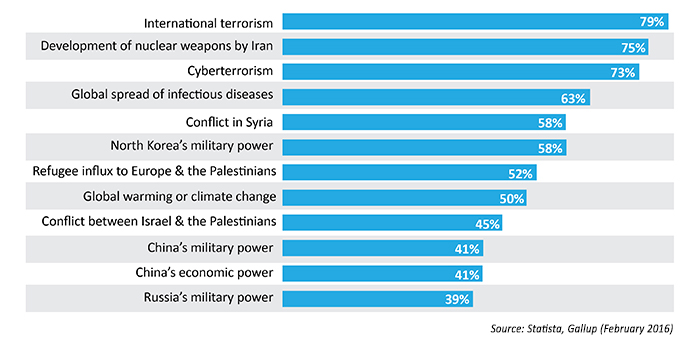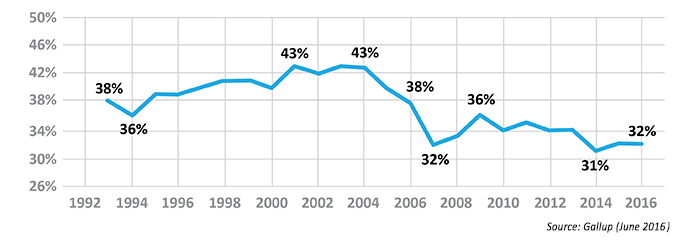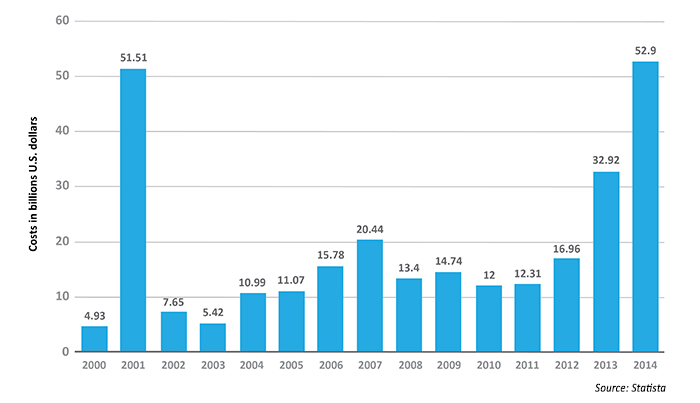
Our heartfelt thoughts and prayers go out to the Orlando community in the wake of the senseless killings this past weekend.
Said Orlando’s mayor Buddy Dyer in an interview with CNN on Monday morning, “This was the most horrific day in the history of Orlando. … My job now is to support my community, the victims and families of victims, and all of our first responders.”
One thing is certain—the issue of fighting terrorism in all of it many forms will become one of the defining issues of the upcoming presidential contest. A recent poll from Gallup shows the strong level of concern on the part of American citizens. From data analytics firm Statista:
“A Gallup survey conducted earlier this year reveals that Americans still consider international terrorism the top threat to their nation. 79 percent of respondents identified international terrorism as a critical threat, with Iran’s nuclear weapons program in second place despite last year’s deal. Interestingly, a new and more modern threat appears in third place. This was the first year where Gallup asked people about the threat from cyberterrorism, and 73 percent of them considered it a critical threat. This chart shows the most critical threats to the U.S. over the next decade, as cited by U.S. adults in 2016.”

“Given the spate of news on the fronts of international terrorism, cyberterrorism and nuclear weapons negotiations with Iran, it’s perhaps unsurprising that these issues are at the forefront of Americans’ concerns about potential threats to the U.S. over the next 10 years. …
“Of course, Republicans and Democrats often don’t agree about what constitutes a ‘critical’ threat to the vital interests of the U.S. Still, for lawmakers, Americans’ widespread agreement on issues such as cyberterrorism and infectious diseases may provide a welcome opening for bipartisan agreement and progress on issues whose importance has broad public consensus.”

Average is based on 14 institutions asked about annually since 1993.

